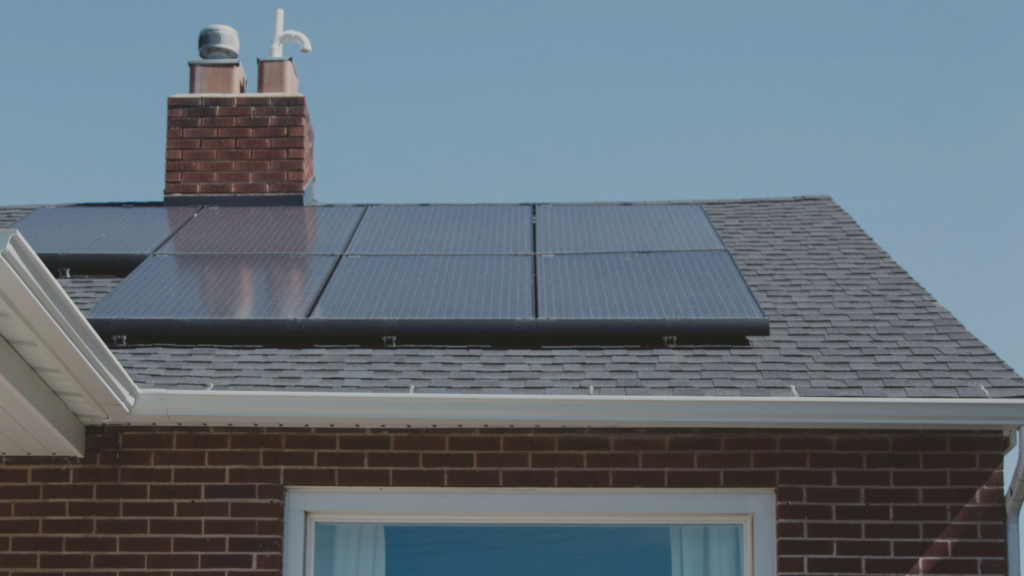State Clean Energy Targets Are Reshaping Corporate Energy Strategy
- Topics :
- Building Performance Standards Higher Education
Schools as Climate Infrastructure: Naugatuck’s Solar and Roof Upgrade
Published November 4, 2025

Naugatuck, Connecticut, has approved a 19 million dollar plan to install new solar panels and replace roofs across four schools, marking a significant step in local energy transition. The borough expects to save about 850 thousand dollars annually through reduced fuel use and fixed-rate electricity pricing, all without adding to the local tax burden. The project will be funded entirely through state and federal grants, with construction scheduled to begin in the summer of 2026.
Introduction
Across the United States, school districts are confronting aging buildings, rising energy bills, and the growing expectation to lead on sustainability. These public institutions operate on tight budgets and limited capital, yet their large roof areas, predictable occupancy, and long-term public ownership make them ideal candidates for renewable energy upgrades. In Naugatuck, local officials have taken an ambitious step by approving a 19 million dollar project that combines roof replacements with solar energy installations across four schools. The initiative will deliver about 850 thousand dollars in annual energy savings and will be funded entirely through grants and state and federal programs, with no direct cost to local taxpayers.
From Maintenance to Modernization
Naugatuck’s school buildings had reached a point where major roof work could no longer be postponed. Rather than treating the project as a simple repair, the borough structured it as a broader solar and roofing upgrade that integrates new photovoltaic systems with the roof replacements. The schools included are Naugatuck High School, Maple Hill Elementary, Hop Brook Elementary, and City Hill Middle School. Mayor Pete Hess explained that the town had installed solar panels fifteen years earlier, but those panels eventually failed and were removed. Because of state funding rules, the borough had to wait for the reimbursement period to lapse before seeking new state assistance. With that restriction finally lifted, Naugatuck seized the opportunity to pursue a combined upgrade that renews the roofs while restoring clean energy generation capacity.
The new plan takes advantage of a favorable timing window in both infrastructure needs and funding availability. By aligning routine maintenance with sustainability objectives, the town will extend the lifespan of its buildings and create a foundation for future electrification measures such as updated heating and cooling systems. The work will begin in the summer of 2026, scheduled carefully to avoid classroom disruptions.

A 19 Million Dollar Solar and Roofing Upgrade at No Cost to Taxpayers
The financial design of the Naugatuck project is one of its strongest aspects. The 19 million dollars will come entirely from a combination of state and federal grants and participation in Eversource Energy’s Non-Residential Renewable Energy Solutions program. This initiative supports institutions that install renewable energy systems by allowing them to offset purchased electricity with power generated on-site. In addition, Naugatuck has secured a fifteen-year fixed electricity rate, protecting the district from future market volatility. Together, these mechanisms are expected to save the borough more than 850 thousand dollars each year through reduced fuel consumption and stabilized utility costs.
The project provides both immediate and long-term economic value. Over the expected lifespan of the agreement, the savings could exceed 12 million dollars while improving the condition of essential public buildings. Mayor Hess summarized the outcome as a straightforward benefit: the town receives new capital improvements, lower operating expenses, and a smaller carbon footprint without raising taxes.
Schools as Anchors of Local Decarbonization
Public schools occupy a unique position in community energy planning. They consume significant amounts of electricity and heat, they have large rooftops suitable for solar panels, and they represent civic spaces that symbolize progress. Naugatuck’s approach demonstrates how educational buildings can become central assets in local decarbonization efforts. The project includes additional panels along the upper parking lot of the high school, designed as open-air carports that will provide shelter for vehicles while producing renewable energy. A nearby hillside will also host extra panels, expanding the system’s capacity beyond the roofline.
These installations align with Connecticut’s climate goals, which target an 80 percent reduction in greenhouse gas emissions by 2050. By turning school campuses into distributed energy hubs, Naugatuck contributes to that statewide objective while improving energy resilience at the local level. Students and staff will experience the benefits of improved facilities, and the project provides a practical example of sustainability that can be integrated into classroom learning.

Lessons for Other Districts
Naugatuck’s solar and roofing upgrade offers a series of insights that other school systems can adapt. Aligning capital improvement schedules with clean energy programs can yield significant leverage. Many districts face similar roof or mechanical system upgrades, and combining those projects with renewable installations can multiply their financial and environmental impact. The Eversource Non-Residential Renewable Energy Solutions program illustrates how utilities can play a constructive role by offering predictable pricing and long-term incentives.
Successful implementation will require careful planning and follow-through. Solar and roofing projects involve coordination among contractors, engineers, and public agencies. Maintenance agreements and performance tracking will be critical to ensuring that the promised savings are realized over time. However, the experience in Naugatuck indicates that when technical and financial planning are aligned, even small municipalities can deliver large-scale results.
Conclusion: Rethinking Infrastructure as Climate Strategy
Naugatuck’s decision to merge roof replacements with solar generation shows how conventional maintenance projects can advance climate goals. The borough created value by linking infrastructure renewal with clean energy investment, achieving long-term savings and reducing emissions. As construction begins in 2026, the town will not only modernize its school buildings but also demonstrate a practical path forward for communities seeking to decarbonize public assets. In the broader context of school infrastructure planning, Naugatuck’s model underscores that effective climate action can begin at the local level, one rooftop at a time.
Reference
- Connecticut Post: Naugatuck approves $19 million for solar upgrades at schools; ‘A no-brainer’
- Eversource: Non-Residential Renewable Energy Solutions Program









